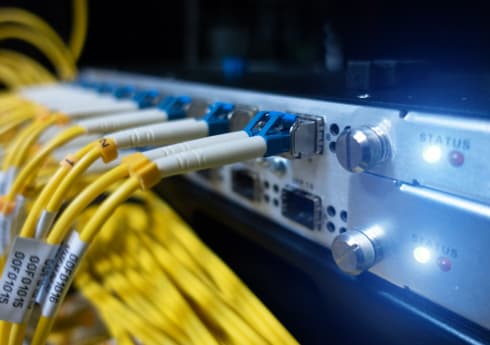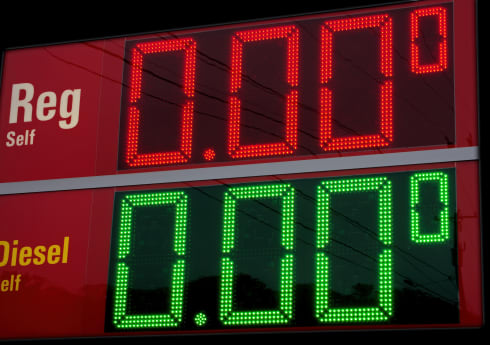How Bad Driving Habits Harm Your Business
Bad Driving Habits Harm Your Business
80% of us reckon we have above average driving skills. 79.99% are probably mistaken.
Several psychological studies have shown we overestimate our abilities and underestimate our shortcomings. Or, to be blunt, we’re not very good at evaluating our own performance.
If your employees drive around in vehicles emblazoned with your business name, this could spell trouble. Your drivers may think they’re safer than the vaults under Threadneedle Street. But they could unwittingly be damaging your reputation and costing you money with their bad habits.
Here’s a look at the business cost of bad driving and what you can do to address it.

What is bad driving?
According to the Highway Code, there are three types of bad driving:
Inconsiderate driving
This is rude or obnoxious behaviour such as:
- Not dipping your headlights for oncoming traffic
- Using the bus lane to skip the queue
- Flashing at other vehicles so they get out of your way
Careless driving
This is where a driver behaves unreasonably or without due care and attention. You don’t leave enough space between you and another vehicle, for instance. Or cut someone off.
Dangerous driving
Dangerous driving falls far below the standard the law expects. Speeding or aggressive driving, drunk driving and driving an unsafe vehicle fall under this category.
Risk of accidents aside, falling foul of the law can open up your drivers to fines and points on their licence.
But bad driving isn’t necessarily illegal. It’s also those habits that could damage the vehicle or make it run less efficiently.
According to the RAC, common bad driving habits include:
- Accelerating suddenly. This puts the engine under unnecessary strain and wastes fuel
- Dragging the brakes when driving downhill or going heavy on the brake pedal. This adds extra wear and tear. And, again, it wastes fuel
- Revving too much, especially just after switching on the vehicle. The oil needs time to warm up and circulate, or you risk damaging the engine
- Waiting too long before shifting gears. Again, this causes excessive revving, which can damage the engine and — guess what? — wastes fuel
Vehicle tracking can give you a bird’s eye view of your fleet at all times, making it quick and easy to manage all your drivers. You can deal with breakdowns or accidents immediately and even check the driver dashcam footage or speeding incidents from your mobile phone.
As a free comparison site, iCompario can help you find the right system for the right price.
How does bad driving increase your business costs?
‘Slight’ accidents cost small businesses thousands of pounds every year, £25,500 on average. And that’s not counting the reputational harm.
From the immediate costs of putting things right to the long-term cost of lost customers, it is vitally important that business operators keep their drivers in check by using driver management software or another means of holding drivers to account.
Below, we’ve highlighted some important examples of how bad driving costs your business money.
Insurance: you pay more for your premiums
Insurers don’t like bad risks. This means your premium will go up if you claim too often. And you may even find it more difficult to get insured, with many leading insurance brands noting that most of your insurance premium is made up of the cost of claims.
By contrast, having good drivers on staff could cut your premiums.
Fuel: you spend more money on diesel and petrol
Bad drivers spend more on fuel than sensible drivers. By contrast, good driving habits can significantly reduce the number of petrol station stops drivers make and save money for your business.
Seeing as fuel can make up a huge proportion of your fleet’s running costs, ensuring your employees adopt good driving practices makes a big difference to your business.
Fuel cards can help you to manage how much money you spend on diesel and petrol. Every time your drivers fill up their vehicles using a fuel card, payments are logged online and in real-time. This means you can keep on top of your costs and spot any opportunities to make savings.
Maintenance and Repairs: you have to bear the cost of vehicle wear and tear
Bad driving means more risk of accidents. Which means the vehicle spends more time in the shop, racks up higher repair bills and spends less time on the road making you money.
But bad driving also increases wear and tear. And the AA reckons this could raise tyre costs by 73% a year and maintenance costs by a whopping 160% over two years.
Loss of customers: your business makes less money
In a survey of 1,000 UK consumers, TomTom found that most people are put off by a business if they witness bad driving. This means that if a potential customer witnesses one of your fleet drivers driving recklessly, carelessly, or dangerously operating one of your vehicles on the road, they are unlikely to give their custom to your business.
General safety problems
Above all else, businesses should be looking to banish bad driving due to the safety considerations alone. In the unfortunate event that one of your drivers ends up in an accident that they caused, you could not only be faced with a vehicle that is out of action but a member of staff, too.
Vehicle tracking can give you a bird’s eye view of your fleet at all times, making it quick and easy to manage all your drivers. You can deal with breakdowns or accidents immediately and even check the driver dashcam footage or speeding incidents from your mobile phone.
As a free comparison site, iCompario can help you find the right system for the right price.
How to improve your drivers’ performance and reduce business costs
We’ve given you some clear and relatable examples of how bad driving costs your business money. This means you should make addressing it a priority and here are three ways you can do this.
Give your drivers ongoing training
Onboarding new drivers helps set expectations. It also shortens the learning curve and leaves less room for mistakes.
But ongoing training is just as important.
Driving causes more work-related accidents than any other task. So every penny you invest in training is well worth it. In particular:
- Send your drivers on refresher courses regularly to help them keep their skills sharp
- Offer safety training, such as other road user awareness and defensive driving
- Create a culture of accountability by rewarding good driving behaviour
Use telematics to track your fleet
Telematics track vehicles in real time. This allows you to identify problem areas — and problem drivers — so you can address them.
A good system can also coach your drivers in real time, empowering them to make better decisions. For instance, flashing LEDs or buzzers can alert them when they brake too harshly, overspeed or leave the vehicle idling too long.
Promote a fuel-saving culture
Good fuel economy doesn’t just mean less trips to the petrol station. It can also slash your maintenance costs by up to 33%. For this reason, you should encourage your drivers to save fuel.
One way you can encourage your drivers to save fuel is to educate them about fuel efficient driving techniques, such as:
- Driving at a constant speed
- Looking ahead. This allows your drivers to be proactive, avoiding sudden manoeuvres
- Using the highest gear possible at the lowest speed possible
- Turning off the engine if it’s been idling for 30 seconds or more
Another tactic you can employ is to have fuel-saving processes in place.In particular, you should check the tyre pressure, engine oil and brakes regularly. Oh, and don’t forget other daily walk-around checks.
Finally, you can reward fuel-saving behaviour. Again, telematics or vehicle tracking technology can help. Home in on who is driving most efficiently and also on who is wasting most fuel.
Use telematics to identify bad driving habits
The best way to stamp out bad driving is to use driver management software and telematics to home in on your fleet.
These are systems used by businesses both large and small all over the world so that they can keep an eye on their drivers, learn about their behaviour, and identify potential problems before they manifest into serious issues and accidents.
iCompario is the free online marketplace for business products and services, where managers and owners can research and rapidly compare fuel cards, vehicle tracking systems, insurance, telecoms and other essentials. The team follows up online queries by telephone so every site visitor finds their ideal, future-proof product at the best price possible.
Let us help you find the right telematics system and driver management software for your business!
Vehicle tracking can give you a bird’s eye view of your fleet at all times, making it quick and easy to manage all your drivers. You can deal with breakdowns or accidents immediately and even check the driver dashcam footage or speeding incidents from your mobile phone.
As a free comparison site, iCompario can help you find the right system for the right price.



